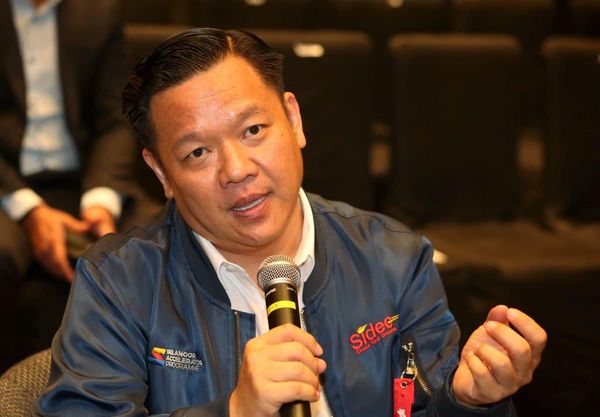By Danial Dzulkifly
PETALING JAYA, Feb 7 — The companies operating in Selangor’s first IC Design Park have raised a collective RM2.6 billion in investment and funding, with the state looking to expand the hub to its second phase, said Selangor Information Technology and Digital Economy Corporation (Sidec) chief executive Yong Kai Ping.
Yong said the first IC Design Park, located in Puchong, reached full capacity within seven months since its August 7 launch last year.
“We are now looking to expand into a second IC Design Park, working together with Cyberview at Cyberjaya.
“With six anchor tenants and seven ecosystem partners on board, we are building a world-class hub to position Malaysia at the forefront of semiconductor innovation,” he said in his welcome speech at Sidec’s Chinese New Year celebration at Sheraton Hotel Petaling Jaya here last night.
He added that Selangor’s semiconductor industry is in its early stages, with many companies still at the pre-Series A level.
“I can’t reveal names just yet, but one of our partner companies is expected to be publicly listed by the end of the year. We are also looking forward to a few more IC companies going public in the next two to three years,” he said.
Yong said Selangor aims to have at least 10 IC design firms contributing to 20 per cent of the National Semiconductor Strategy, each valued at over RM1 billion.
He also said nearly 400 engineers are set to be employed at the IC Design Park in Puchong.
“We already have around 100 engineers working in our IC Design Park, and we are set to receive another 300-plus IC engineers soon,” he said.
[caption id="attachment_360056" align="aligncenter" width="1200"] Image for illustration purposes only. — Picture via PEXELS[/caption]
Image for illustration purposes only. — Picture via PEXELS[/caption]
He added that Sidec is expanding its startup support efforts through a deep tech accelerator programme, which will focus on artificial intelligence (AI), smart mobility, bio-based solutions, and net-zero technology.
“We need to power every startup with AI, not just chatbots, but also AI agents with real capabilities. Our goal is for all tech startups in our accelerator to be equipped with AI technology,” he said.
Beyond semiconductors, Yong said Malaysia is poised to become a global data centre hub, with projections showing the country will have 5GW of data centre capacity by 2030 — equivalent to two million graphic processing unit (GPU) servers.
“This would be similar to what Meta (Facebook) is building in the US. If we consider that each GPU server costs around RM1 million, the total CapEx investment in Malaysia would amount to RM2 trillion, which could place us among the top 10 in the world, possibly surpassing Japan,” he said.
Yong however acknowledged concerns about the energy and water consumption of data centres but argued they could be a major driver for Malaysia’s local supply chain.
“If we ensure that 30 to 40 per cent of the local supply chain benefits from data centres — whether through semiconductor ASIC (application-specific integrated circuit) chips for AI, high-bandwidth memory, SSDs (solid-state drives), power supply, or water management — it could significantly spur local industry growth,” he said.
“In fact, one of the data centres we are looking at is one of the major players, which might be paying a few hundred million ringgit on power.
“Imagine that kind (of economic impact), if we can (take the opportunity) positively, we will spur our local industry.”
[caption id="attachment_330791" align="aligncenter" width="1200"] Selangor Information Technology and Digital Economy Corporation (Sidec) chief executive officer Yong Kai Ping speaks during an interview with Selangor Journal at Sidec’s office in Seksyen 7, Shah Alam, on October 11, 2023. — Picture by AHMAD ZAKKI JILAN/SELANGORKINI[/caption]
Selangor Information Technology and Digital Economy Corporation (Sidec) chief executive officer Yong Kai Ping speaks during an interview with Selangor Journal at Sidec’s office in Seksyen 7, Shah Alam, on October 11, 2023. — Picture by AHMAD ZAKKI JILAN/SELANGORKINI[/caption]
He likened data centres to real estate investments, given the high value of server infrastructure.
“We believe that with the rise of AI, more companies will own their own data centres or rent computing power, similar to an ‘Airbnb for servers’. This will create a lot of opportunities in both hardware and software,” he said.
Yong credited the state government’s leadership in positioning Selangor as a key player in the semiconductor and AI industries, citing initiatives by Invest Selangor and Menteri Besar Selangor (Incorporated), or MBI.
Also present at the event were Menteri Besar Dato’ Seri Amirudin Shari, state executive councillor for investment, trade and mobility Ng Sze Han, MBI chief executive Saipolyazan M. Yusop, and Invest Selangor chief executive Datuk Hasan Azhari Idris.
Also in attendance were major semiconductor industry players, as well as local startups and businesses that previously participated in Sidec’s various business initiatives.




